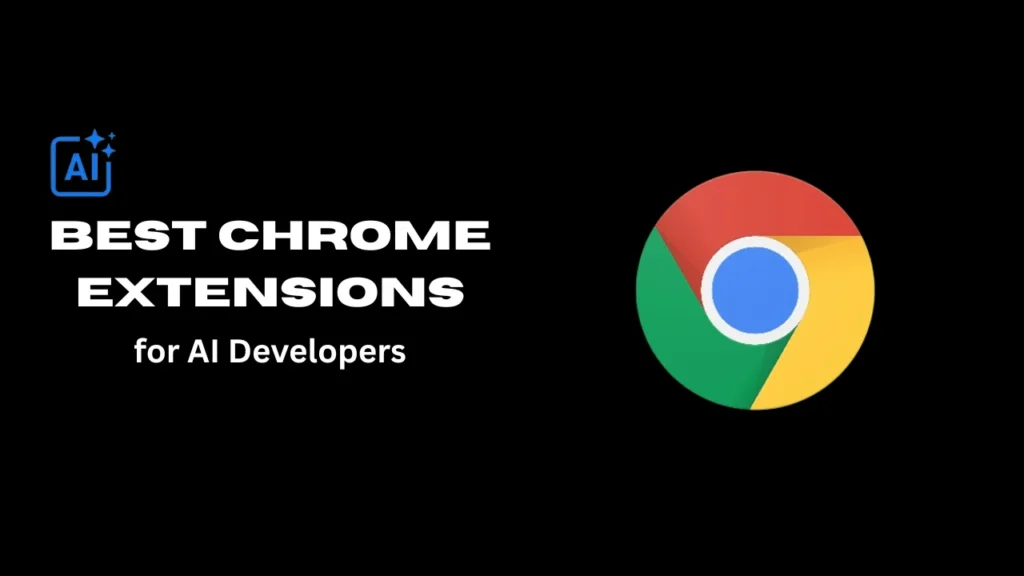Introduction of Best Chrome Extensions for AI Developers
If you’re serious about AI development, then figuring out your browser workflow matters more than you might think. The browser isn’t just for browsing—it’s a command centre. In this post I’ll go through the Best Chrome Extensions for AI Developers in my 2025 testing experience—tools that I’ve installed, used, and integrated into my workflow as author Muhammad Umar for Advance Techie. Whether you’re prototyping models, reviewing code, managing datasets, or surfacing research, the right extensions can make a big difference.
Why Chrome Extensions Matter for AI Developers
As an AI developer you juggle:
- code editing, model testing, deployment links
- reading research papers, saving snippets, capturing ideas
- debugging, inspecting data, collaborating
- keeping on top of your favorite frameworks, APIs and updates
A browser extension that sits right in your productivity stack (next to your IDE, notebook, terminal) can reduce friction. For example, imagine having a quick way to generate API skeletons from code, inspect model outputs inline, or even capture research references as you browse. That’s why I prioritized extensions that bring workflow acceleration, not just novelty.
Top Chrome Extensions for AI Developers (2025 Edition)
Here are five extensions I found especially valuable in 2025. I’ll describe what they do, why I use them, and how they integrate into an AI-developer workflow.
| Extension | What it does | Why it helps AI devs |
|---|---|---|
| Code2API | A Chrome extension that uses large-language-model prompts to convert Stack Overflow code snippets into reusable APIs. | When I’m browsing code snippets or reading forums, this tool lets me quickly generate a small API wrapper rather than rewriting from scratch. Saves time. |
| CLARA | A browser extension for code comprehension, refactoring, and quality-analysis using AI models. | Useful when dealing with legacy model code or integrating third-party repos—CLARA gives inline hints right in the browser. |
| Tampermonkey | A userscript manager that lets you inject or run custom JavaScript in any web page. | For AI devs I sometimes write small scripts to scrape data, annotate research tables, or customise workflow in web-apps. Tampermonkey makes that possible. |
| VisBug | A visual tool for inspecting and modifying web-page UI elements directly in Chrome. | Although not strictly “AI only”, I use it when building demos or model visualisations I embed in webpages—quick editing in browser helps. |
| Qodo Merge | Released in 2024, this extension integrates with GitHub and provides AI-powered code review, description generation and automated analysis. | For AI projects, code reviews of model training pipelines, doc-generation or interface code benefit from this automation. |
How I Use Them in Practice
1. Research & prototyping
When I’m reading a research paper or blog post (e.g., on arXiv) and I find a code snippet I like, I open Code2API in the browser, paste the snippet, and generate an API template. This lets me jump into testing faster rather than rewriting logic.
2. Code review & integration
I often fork open-source AI repos. Before pulling into my IDE, I use CLARA or Qodo Merge via their Chrome extension to highlight potential issues or generate doc strings. It helps me avoid shaving off chunks of time debugging later.
3. Web demo editing
Suppose I’m building a small interactive demo for a model (say GPT-based summariser) and want to tweak UI elements in Chrome—it’s faster to open VisBug, tweak margins or colours, and preview immediately rather than doing full builds.
4. Data scraping or custom dashboards
Occasionally I need to extract data from web listings (e.g., dataset stats, benchmark tables) or add a custom UI overlay on a vendor site. Tampermonkey scripts loaded via Chrome are my go-to for one-off tasks—once set up, they save dozens of manual keystrokes.
Key Insights & Best Practices
Choose extensions that integrate
Extensions are only helpful if they are in your natural flow. I filter by:
- Does it sit in the toolbar or context menu so I remember to use it?
- Does it add real value for AI workflows (code, data, model, collaboration) rather than general browsing?
- Does it play well with VS Code, Jupyter, GitHub and my stack?
Keep performance and privacy in mind
Browser extensions can slow things down or pose security risks. One paper found that detecting malicious Chrome extensions remains “a fundamentally hard problem”. arXiv
So my rule: only enable extensions I use, periodically review them, and disable any idle one.
Workbench approach > One-size-fits-all
No extension replaces your IDE, notebook or cloud environment. The best extensions act as “just-in-time helpers” in the browser. I still code locally, test in containers, but use the browser as a glue layer for research, context, and tooling.
Maintain ethics & version control
Especially with AI code and “assistant”-based code generators, I make sure to review outputs carefully (correctness, licence compliance, bias). Extensions that generate code should be treated like junior developer helpers, not autopilot.
Table: Quick Comparison Summary
| Extension | Best for | Learning curve |
|---|---|---|
| Code2API | Rapid API wrapper generation | Low |
| CLARA | Code comprehension & refactors | Medium |
| Tampermonkey | Custom scripts & data extraction | Medium |
| VisBug | UI tweaks & front-end demos | Low |
| Qodo Merge | AI-powered code review & GitHub integration | Medium |
Final Thoughts & Recommendation
If you’re an AI developer working in the browser ecosystem (which most of us are, at least for research, dashboards, proto-tools), adding a handful of well-chosen Chrome extensions can deliver outsized productivity gains. From my own workflow as Muhammad Umar running Advance Techie, I found that using Code2API and CLARA alone gave me 20–30 % faster iteration when prototyping new models and integrations.
My recommendation: pick one new extension this week, integrate it into your workflow, measure how much time it saves or friction it reduces. Then pick another. Don’t overload your browser with dozens of idle extensions—they become distractions.
Supercharge Your Workflow with the Best Chrome Extensions for AI Developers
I’d love to hear which browser extensions YOU use when developing AI, and why. Let’s build a better community list.
If you are a developer it would help you: What is Cursor AI and How It’s Changing the Way Developers Code
👉 Comment below with your favourite extension (Chrome or otherwise) for AI work, how you use it, and whether you’d recommend it to others.
1. What are the best Chrome extensions for AI developers in 2025?
Top picks include Code2API, CLARA, Tampermonkey, VisBug, and Qodo Merge—each designed to speed up coding, automate tasks, and simplify your AI workflow.
2. Are Chrome extensions safe for AI developers?
Yes, if you stick to trusted sources. Always check permissions and reviews—security matters when handling code, models, or data in the browser.
3. How do Chrome extensions improve AI development productivity?
They cut repetitive steps. Tools like CLARA explain code instantly, while Code2API turns snippets into APIs—saving hours every week.
4. Can Chrome extensions replace IDEs like VS Code or Jupyter?
No, they complement them. Extensions enhance browsing, testing, and research but your IDE remains the core for real development.
5. Which extensions do professionals actually use daily?
Developers often rely on Qodo Merge for code reviews, Tampermonkey for automation, and CLARA for quick code insights—small tools that make a big difference.


